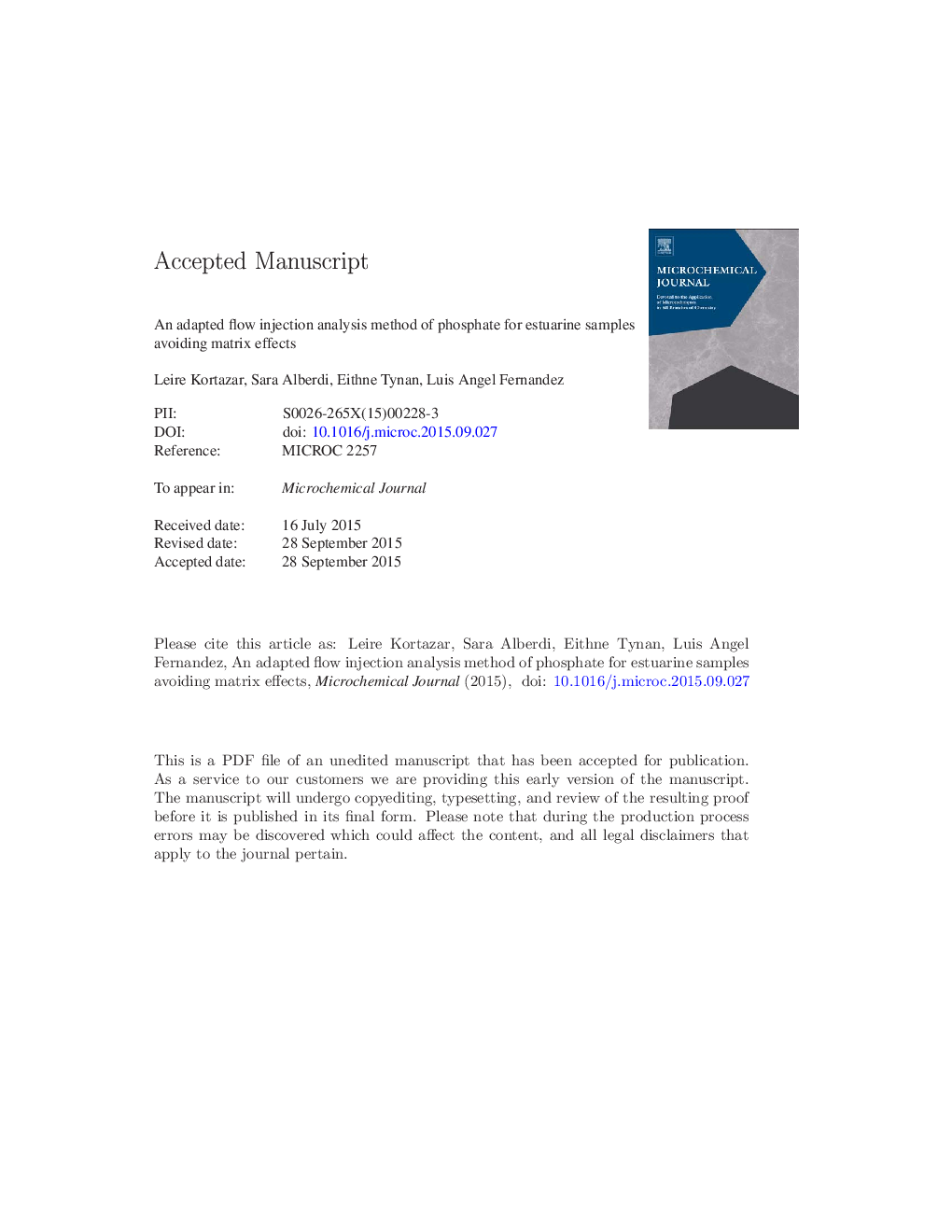| Article ID | Journal | Published Year | Pages | File Type |
|---|---|---|---|---|
| 7642322 | Microchemical Journal | 2016 | 13 Pages |
Abstract
A flow injection analysis (FIA) method, based on the molybdenum blue formation, has been adapted and successfully optimized in order to use it to measure phosphate in estuarine water samples. Matrix effects have been avoided using the highest peak, and the Schlieren effect (common in FIA analysis) has been minimized by injecting the ascorbic acid with the same sulphuric acid concentration as the molybdate reagent. The concentrations of the reagents have been optimized by a Central Composite Design. The measuring range used was 0.02-0.2 mg Lâ 1 phosphate and both univariate and multivariate regressions have been compared using a random sample, reaching the same concentration (0.065 ± 0.002 mg Lâ 1). However, the univariate regression showed lower LODs, 7 μg Lâ 1 (74 nM) in front of the 10 μg Lâ 1 (105 nM) reached by the multivariate one. The effectiveness of the developed method was tested with real samples. For this, low-cost conventional equipment easily available to most laboratories has been used, with a LOD low enough to measure estuary samples, and high repeatability.
Related Topics
Physical Sciences and Engineering
Chemistry
Analytical Chemistry
Authors
Leire Kortazar, Sara Alberdi, Eithne Tynan, Luis Angel Fernández,
